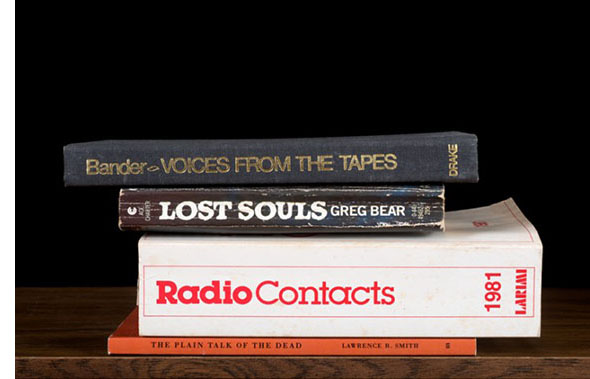 |
(2).jpg) |
hear, broadcast from speakers, the plummy, recorded voices of two actors (male and female), reciting bits of text sourced from the Internet. Affecting stuffy erudition, they describe, in purely formalist terms, a work of art we can’t see. But when you listen and stare, things change. Sensory deprivation and suggestion conspire, and before stupefaction sets in, the canvas at your feet – a literal smackdown of painting — becomes a kind of “screen” onto which we project our own visions of the object described. It's an elegant demonstration of how and why ideas needn’t be affixed to objects to become concrete. The artist makes that point again with snippets from seven gothic/horror novels, all self-penned and displayed on yellowing paper with foreboding titles (The Visage, The Tomb, The Goddess Plague). They, too, light up pictures; only here the effect rests entirely on words, a tribute to sharp writing and to genre parody of a very high order.
.jpg) |
The sculpture, which spells out “THE FUTURE,” was created for last year’s People’s Climate March. Its meltdown over the course of a beautiful New York day sent a clear message. But the four-minute, 22-second clip, which plays to a mournful cello score by Ernst Reijseger, shows few signs of that message having been received. Instead, it shows people gleefully snapping group portraits and selfies. The impulse is understandable. But so is a terrible irony. The act of taking such pictures is equivalent of photographing yourself against a cardboard cutout of the Grim Reaper: a demonstration of the gulf between consciousness and behavior.
 |